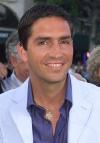|
Issue Date: May 2, 2003 As filming ends, ‘Passion’ strikes some nerves By CINDY WOODEN The Jerusalem and Garden of Gethsemane sets were dismantled at Rome’s Cinecitta Film Studios in late March, but the talk about Mel Gibson’s upcoming film, “The Passion,” did not stop.
The film focuses on the last 12 hours of Jesus’ life and, not surprisingly, struck some nerves, particularly because of its graphic violence and concern over how the Jews will be portrayed. Shot in southern Italy and in Rome, the movie had no direct Vatican input. But several priests and a few seminarians from the Legionaries of Christ visited the set, where Gibson arranged for a Tridentine Mass to be celebrated early every morning. Unveiling his plans for the film, including his intention to use only Aramaic and Latin with no subtitles, Gibson said his aim was historical accuracy. The question of how Jews are depicted in dramatizations of Christ’s death has been a controversial issue for centuries. Eugene J. Fisher, director of Catholic-Jewish relations in the U.S. bishops’ Secretariat for Ecumenical and Interreligious Affairs, has asked the movie’s producer to allow a panel of Catholic and Jewish scholars to evaluate the script before the final editing of the film begins. But Gibson, in a March interview with the Eternal Word Television Network, said, “This is not a Christian versus Jewish thing: ‘He came into the world and it knew him not.’ Looking at Christ’s crucifixion, I look first at my own culpability in that.” Jesuit Fr. William J. Fulco, who translated the script into Aramaic and Latin and has seen hours of raw footage said, “In no way do I experience it as offensive to Jews or anyone else.” The priest, who teaches at Loyola Marymount University in Los Angeles, was asked by Fisher and Rabbi Eugene Korn of the Anti-Defamation League to give his evaluation of the film in the light of church guidelines for dramatizations of the Passion. “The Jewish community portrayed in the film consists of people both sympathetic to Jesus and hostile to him, just as the Roman community is portrayed,” Fulco wrote to Fisher and Rabbi Korn. “It is clear from the whole tenor of the production that those who are ‘guil-ty’ are you and I, those of us who refuse to receive and return love. Sinners are the ones pointed to in this production,” he wrote. Everyone connected with the film, scheduled for a 2004 release, agrees that the violence is graphic, especially in the scenes where Jesus is scourged and crucified. “I think that the true horror of the Passion will surprise people,” Gibson, who directs but does not act in the film, told the National Catholic Register. While he said no one under 12 should see the movie, “there is no gratuitous violence in this film.” “Understanding what he went through, even on a human level, makes me feel not only compassion, but also a debt: I want to repay him for the enormity of his sacrifice,” Gibson said in the interview on the Rome set. Jan Michelini, a 23-year-old assistant director, told Catholic News Service, “It will be a very brutal movie, but I’m glad because for the first time someone is showing what really happened.”
Jim Caviezel, who plays the part of Jesus, not only endured four to six hours a day under the hands of make-up artists, but also spent hours shivering on the cross or standing barefoot on a cold floor shackled to a post for the flagellation scene. Michelini said “strange, powerful things” kept happening during the shooting and he believes that was largely due to the example of prayer and spirituality provided by Gibson and Caviezel. Several times after Luca Leonelli, who plays Judas, shot and re-shot the scene where he betrays Jesus, “he would be crying and could not stop,” Michelini said. “I would have to put my arms around him and console him. He felt like a betrayer. “You can see the love in every scene,” he said. “It is a movie about love, even though it has a brutal side.” Rosminian Fr. Jean-Marie Charles-Roux, who celebrated the Tridentine -- or pre-Vatican II -- Mass for Gibson on the film set as well as in the tiny Rome church where, with Vatican permission, the Tridentine rite is used exclusively, jokingly referred to the actor-director as “the bishop” -- the one who told him when and where Mass would be celebrated. “It’s very rare to find Hollywood people who so want to go to confession and Communion, so I went along [with the often-changing schedule],” the priest told CNS. Fulco, professor of ancient Mediterranean studies at Loyola Marymount, visited the Rome set three or four times and was in continual telephone contact with Gibson during the shooting. He said he was not bothered by Gibson’s preference for the old Mass; the Catholic church “is a large tree where many colorful birds make their nest.” As for the violence, Fulco said, it is offset by “the tender relationships between the characters, especially between Jesus and Mary.” “The brutality, which is historically real, is broken up with a sense of hope and strength,” he said. The film reflects St. Paul’s teaching that “if we die with Christ, we will rise with Christ,” the priest said. “This applies not just to the characters, but to the audience. I think the film makes it clear that our own life and sufferings are being embraced and redeemed,” he said. National Catholic Reporter, May 2, 2003 |

